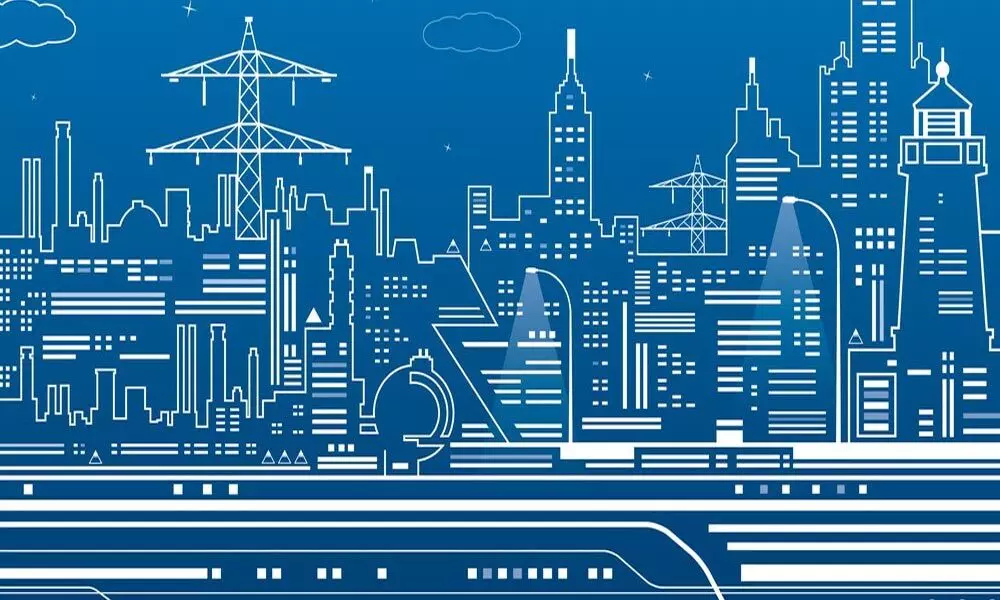Low tax to GDP ratio makes it difficult for the govt to spend more on infrastructure
Experts feel that while spending on public infrastructure cannot be over emphasised, in the current scenario healthcare and agriculture may produce major traction. Also, with the fiscal deficit appearing high, the government may have to be careful with loosening the purse strings.
image for illustrative purpose

Govt proposes to raise EBR of Rs 49,500 crore in 2020-21 BE which is 0.22 per cent of GDP
The Economic Survey 2020-21, presented by the Union Finance Minister, Nirmala Sitharaman in the Parliament on Friday (January 29), said in no undertain terms that low tax to GDP ratio makes it difficult for the government to provide sufficient funds for investment and infrastructure expansion while staying within the bounds of fiscal prudence. The survey, presented by the Finance Minister said that, improving the composition and quality of expenditure therefore assumes significance.
Interestingly, in May 2020, the Centre had made a series of announcements as a part of the Atmanirbhar Bharat Abhiyan to provide stimulus to the economy to beat the repercussions of Covid-19 and lockdown restrictions. However, this stimulus was a kin to short-term reliefs to various affected people and sectors. It is therefore expected that the Centre would tap into the visible green shoots to jump start the economy and large allocation to infrastructure projects is one of the key means for doing so. Spending on public infrastructure can be viewed as a Keynesian multiplier to provide stimulus to the economy and create employment opportunities.
"Over the past few years, the quality of expenditure measured in terms of the share of capital expenditure in total expenditure has on an average sustained at a level," the government's annual document said, adding, "It is estimated to increase roughly by a percentage point in 2020-21 BE over 2019-20 PA which accounts for an expected growth of 22.4 per cent in capital expenditure over 2019-20 PA. The major sectors apart from defence services, that account for bulk of capital expenditure allocation in 2020-21 BE include industry and minerals, construction of roads and bridges, communication services, and space technology."
The model of mobilising extra budgetary resources has been in practice by the Modi government for the last four years or so and there has been a continuity.
The survey pointed out that besides budgetary spending, the government has also mobilised "Extra Budgetary Resources (EBR)" to finance infrastructure investment since 2016-17. "EBRs are those financial liabilities that are raised by public sector undertakings for which repayment of entire principal and interest is done from the Central Government Budget. The government has raised EBRs of Rs 1.35 lakh crore during the period from 2016-17 to 2019-20. It proposes to raise EBR of Rs 49,500 crore in 2020-21 BE which is 0.22 per cent of GDP," it said.
Experts feel that while spending on public infrastructure cannot be over emphasised, in the current scenario healthcare and agriculture may produce major traction. Also, with the fiscal deficit appearing high, the government may have to be careful with loosening the purse strings. This provides an ideal opportunity for the government to bring in non-fiscal, structural and policy reforms which may provide the required impetus in achieving the target set by the government for the National Infrastructure Pipeline (NIP). It is often seen that the time lag in completion of infrastructure projects due to regulatory roadblocks tends to set off the expected benefits from public spending. As a low-hanging fruit, the government should seek to bring in more regulatory and structural reforms to the infrastructure sector and allocate funds for completion of incomplete projects rather than announcing new projects which will take years to complete.
Significantly, the NIP which is an umbrella term for all previously promulgated schemes like Bharatmala, Smart City Mission and Sagarmala has, as of today, 7,437 projects with a total project cost of $1,800 billion. Out of these, around 1,750 projects are under development.

